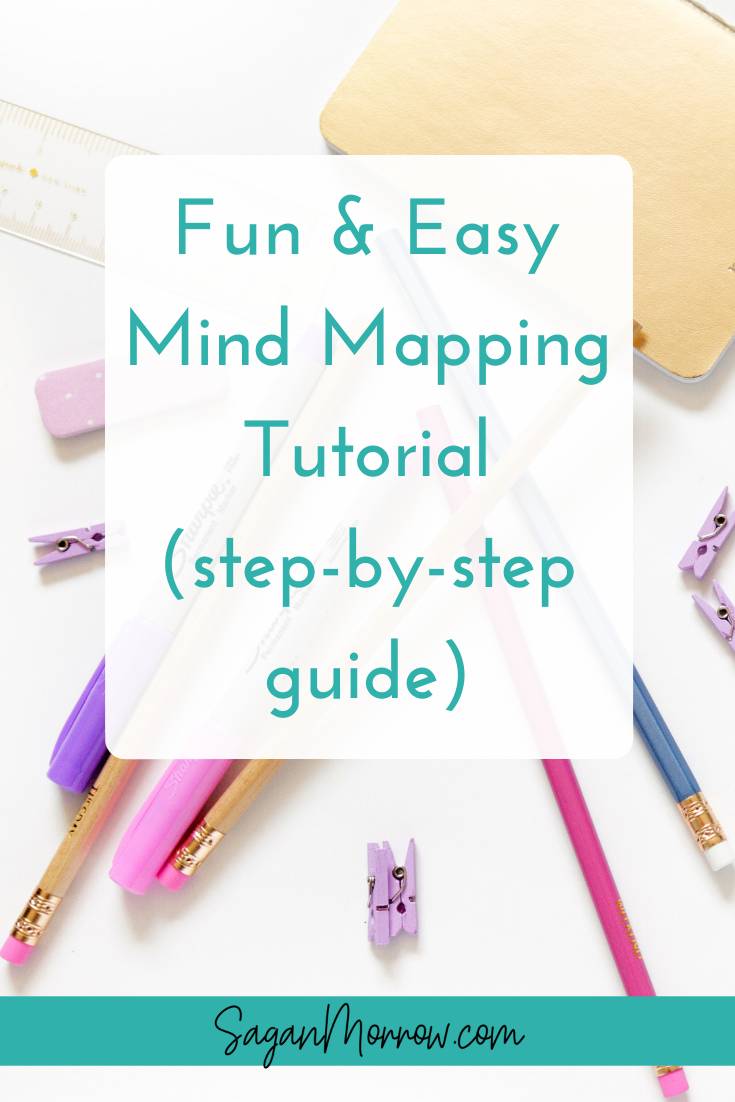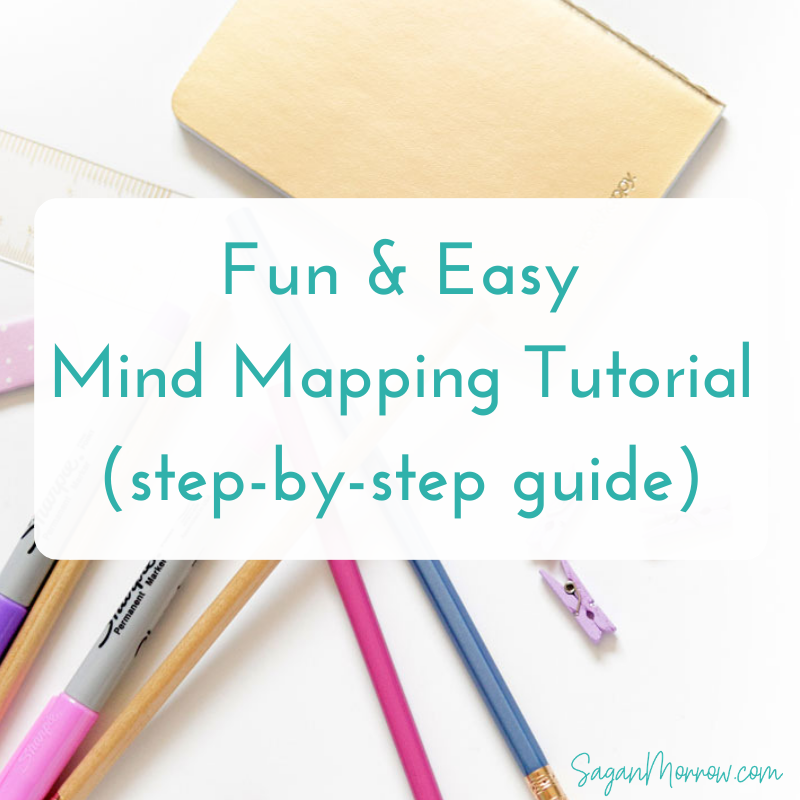Are you a visual, hands-on person? You might find mind mapping to be a useful tool. Mind mapping can be used to organize your thoughts and ideas, improve your understanding of different concepts, and group ideas together so they are all in one place. The best part is, mind mapping doesn’t need to be a complicated process. This easy mind mapping tutorial will make it a fun and straightforward practice in your business and life!
Note: This mind mapping tutorial is a sneak peek of one of the bonus materials you get when you join Productivity Powerhouse!
The more you use mind mapping in your business, the more that you’ll be able to save time and energy… which means you can get more done in less time, without the overwhelm, when you use mind mapping as a tool. How cool is that?
Here are just a few examples of what you can use mind mapping for in your solopreneur business…
- Creating a business plan
- Figuring out who your ideal client is
- Constructing a marketing strategy
- Putting together a design plan for your website
- Setting goals and organizing timelines
- Project management (for yourself or for your client work)
- Understanding difficult concepts more easily
- Professional development & training
- Outlining a book
- Doing a SWOT analysis
- ...and so on. The sky’s the limit!
Before you get started with mind mapping, you’ll want to collect your supplies. You can adapt mind mapping to any style that suits you—so feel free to have fun with it! In this mind mapping tutorial, we’re focusing on a hands-on method to do it on paper. 
Supplies for your mind mapping experience can include any of the following:
- Poster paper
- Bulletin board
- Coloured pens
- Colour-coded sticky notes (my personal favourite)
- Stickers
- Index cards
- Ruler
- Washi tape
- Any research or data you want to have on hand for consulting purposes
(If your office is a bit of a disaster zone, and you aren't sure whether you have the right supplies or not, then these home office organization tips will help you get everything sorted in no time.)
Note: You can also do mind mapping on the computer, but you might find it more effective to do it on paper if you are a more visual or tactile person. This step-by-step guide for mind mapping is one method of doing it—feel free to adapt it to suit your needs!
Easy mind mapping tutorial:
Step 1: Organize your poster paper into categories.
How this will look depends entirely on what you are using mind mapping for.
For example, if you are creating a business plan, you could have your main vision or purpose of your business at the very centre of the paper, with threads leading to categories surrounding the central business idea. Those categories along the outside could include topics like ideal client profile, services offered, etc.
In another example, if you are trying to figure out who your ideal client is, you could divide your poster paper into various boxes, each with category titles such as “Personal Life,” “Communication Style,” “Business Goals,” “Driving Motivations,” etc.
Step 2: Write down your ideas.
You can do this directly onto the poster paper, if you like. However, if you write down separate ideas on colour-coded sticky notes or index cards rather than writing it directly on the poster paper, it will make it much easier for you to rearrange your ideas on that poster paper (before deciding on firm placements for each on your map).
Have fun with this! You can write quick notes or even draw images on index cards, or use stickers and washi tape and highlighters to denote key ideas. If you are using coloured sticky notes, then create a legend for yourself so that you use certain colours for different categories. That will help make it easier for your brain to process all of it visually (which is the purpose of mind mapping, after all).
Note: You may find it helpful to set a timer for yourself, so that you continue to brainstorm ideas for a particular length of time.
Step 3: Identify and review the connections and overlaps between various ideas.
After you’ve finished mapping out your ideas and transporting all that information out of your head and onto paper, now’s your chance to connect the dots and review it all:
Where do you see overlap and connections between the different notes you’ve written down? What kind of themes can you identify? How does all of it tie together? How can you use the information you’ve now put onto this mind map as a tool for moving forward with your business?
Make notes of these, rearrange your ideas as needed, and physically draw lines or use washi tape to connect one idea to the next.
Step 4: Simplify your mind map and use it as a tool.
Your mind map might currently include a lot of information and ideas—which is great! But now it’s time to simplify it, which will help you to more easily process it at a glance (and ensure that it doesn’t overwhelm you).
After all, your mind map is a tool to use in your business—it’s not something you want to create and then forget all about. That defeats the purpose of this mind mapping exercise. Instead, your mind map is designed to help you be much more focused and intentional with your business... so you can save time and energy each and every week.
To turn your mind map into a practical tool for your business, you may wish to distill some of your ideas into a phrase or even one word. Here, you are “recreating” your mind map to a small, simplified version that you can use to refer to regularly in your business.
Then, hang up your mind map on the wall of your office so you can see it every day, and/or snap a photo of it to use as your computer screen background.
There you have it: your easy mind mapping tutorial in just 5 steps!
Want to learn more about improving productivity and efficiency in your business? You’re going to love Productivity Powerhouse.
"This e-course is easy and quick, and it's possible to start implementing techniques immediately to see change! Sagan really takes the effort to make Productivity Powerhouse adaptable to any personality and business. She helped me work with myself to be efficient, rather than against myself.
Productivity Powerhouse has enabled me to dedicate time to my side business on a consistent basis even as a mom with a full-time job. I've only implemented a few concepts, but so far I've already found about 5 hours in a given week to dedicate to my business!"
- Michele
Enroll in the program now to start getting more done in less time—without the overwhelm—starting today!
